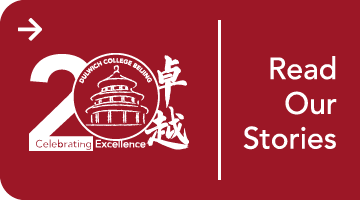From DCB to Dunhuang: A Student's Window into Chinese History
From 26 June to 1 July 2023, the Dunhuang Chinese Succession Special Purposed Fund organised a special exclusive educational programme for the DCB community called the Grand Tour of Dunhuang. The event was opened to those who registered for the Dunhuang Aesthetic Connection with the World Exhibition and MOU ceremony on 22 April.
Evan Y, one of the attendees, shares more about his personal experience below:
From 26 June to 1 July, I went on a special educational program called the Grand Tour of Dunhuang, organised by the Dunhuang Chinese Succession Special Purposed Fund. The purpose of the trip was to learn about Dunhuang: its rich culture, its beautiful geological features, and most excitingly, the grottoes.
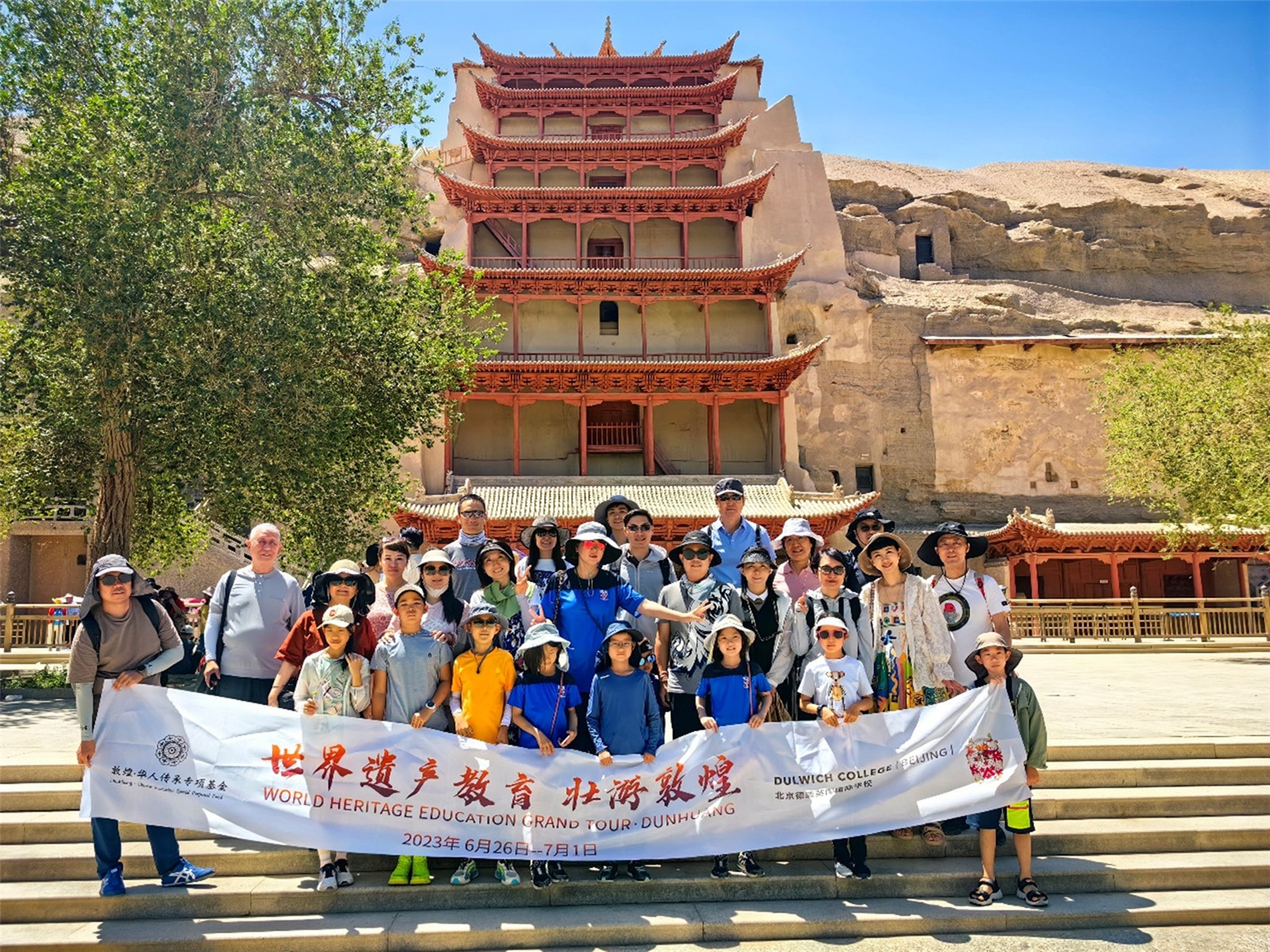
Anticipation had built up in me prior to the journey, particularly with regards to the grottoes. My previous role as a bilingual tour guide and student co-leader at the Dunhuang Aesthetic Connection with the World Exhibition at CEIBS had exposed me to the treasures within the Mogao Grottoes. I was fascinated by the exquisite paintings and the profound history they held.
The trip not only met but also surpassed my expectations. The expert docents from the Dunhuang Academy masterfully explained the artworks and their historical significance, while the tour guides introduced numerous insights about Dunhuang's broader context. One of the experts even met us on the first night, patiently answering questions from curious children and the excited parents. Seeing these artworks in person was different from reading plain documents, and I credit the familiarity and what I considered the sincerity of these works to my prior knowledge and engagement with those documents.
We also visited many of Dunhuang’s historical and natural wonders – not just the grottoes, but the city as well. We marvelled at the Mingsha Mountain, (meaning the "Mountain of Ringing Sand", which describes the sound of the wind as it sweeps the sand) the Crescent Lake, the Yadan landform, and visited the Dunhuang Museum. The Yulin Grottoes – the ‘sibling’ grottoes of the Mogao Grottoes and both excavated at around the same time, captivated us with their closely related artistic styles, the content of the murals, the caves’ architectural structure, and the degree of preservation.
Our Dunhuang-styled hotel was nice, and so was the food. We tasted the sweet watermelons in Guazhou, their specialty, as Guazhou has often been called "the district of watermelons!”.
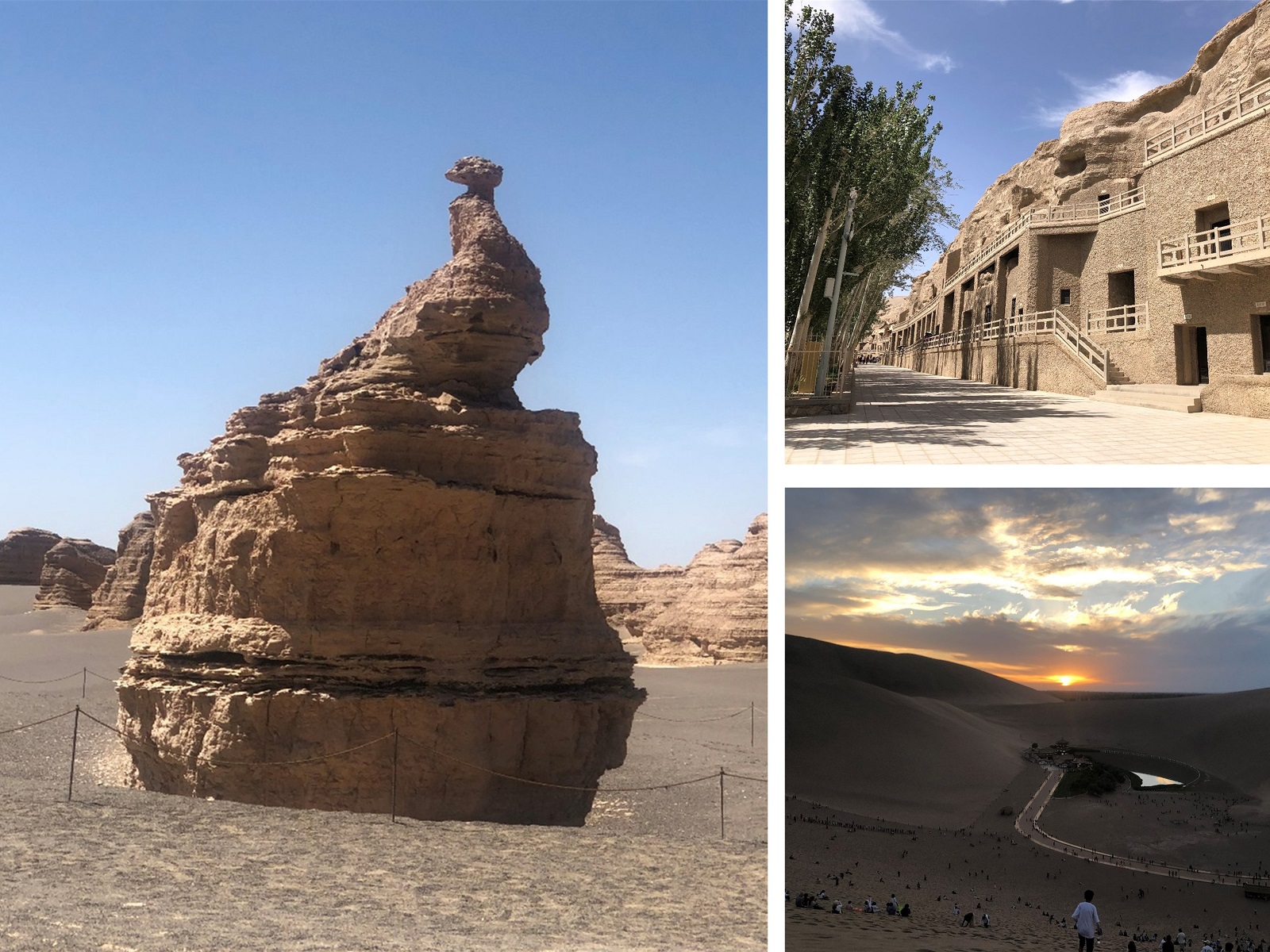
As stunning as the views were, what impressed me the most was the educational aspect of the trip. It truly was a ‘special educational programme,’ as the programme had described.
Again, we were not just looking at Mogao Grottoes, but rather the whole city and culture behind it.
We tried colouring a small copy of the famous murals in Mogao Grottoes using the traditional mineral pigments to appreciate the craftsmanship of the artisans of the grottoes. Sand is an element physically associated with Dunhuang, and therefore we experienced how to make sand bottle paintings and dynamic sand painting.
We also watched the immersive drama performance See Dunhuang Again, which illustrated the historic figures in the artworks of the grottoes and the history of the Sutra Cave. Some argued that the Taoist priest who discovered the Sutra Cave was guilty of selling the artefacts to foreign explorers, but many others argued back explaining that he was trying to protect the grottoes since the government did not understand the historical significance of the grottoes at the time and did not provide enough financial support in preserving the grottoes. The drama brought the priest to life: it painted him as being filled with guilt and hesitation on the night when he watched the historical treasures depart from their home country. We also went to the Yumen Pass and Yangguan Pass, close to the remnants of the Great Wall. These two passes were mentioned by many of the famous ancient Chinese poems because it was the essential path on the Silk Road that one must pass to enter or exit China. Interestingly, there were actors at one of the Pass, pretending to be soldiers, who gave us the ancient passports used for exiting China, as if we were merchants who were adventuring to the Western Regions and stopped by to pray for success. All these experiences vividly depicted the concept of Dunhuang, leaving me with an unforgettable impression of this colourful city of oasis within the vast, monotonic desert.
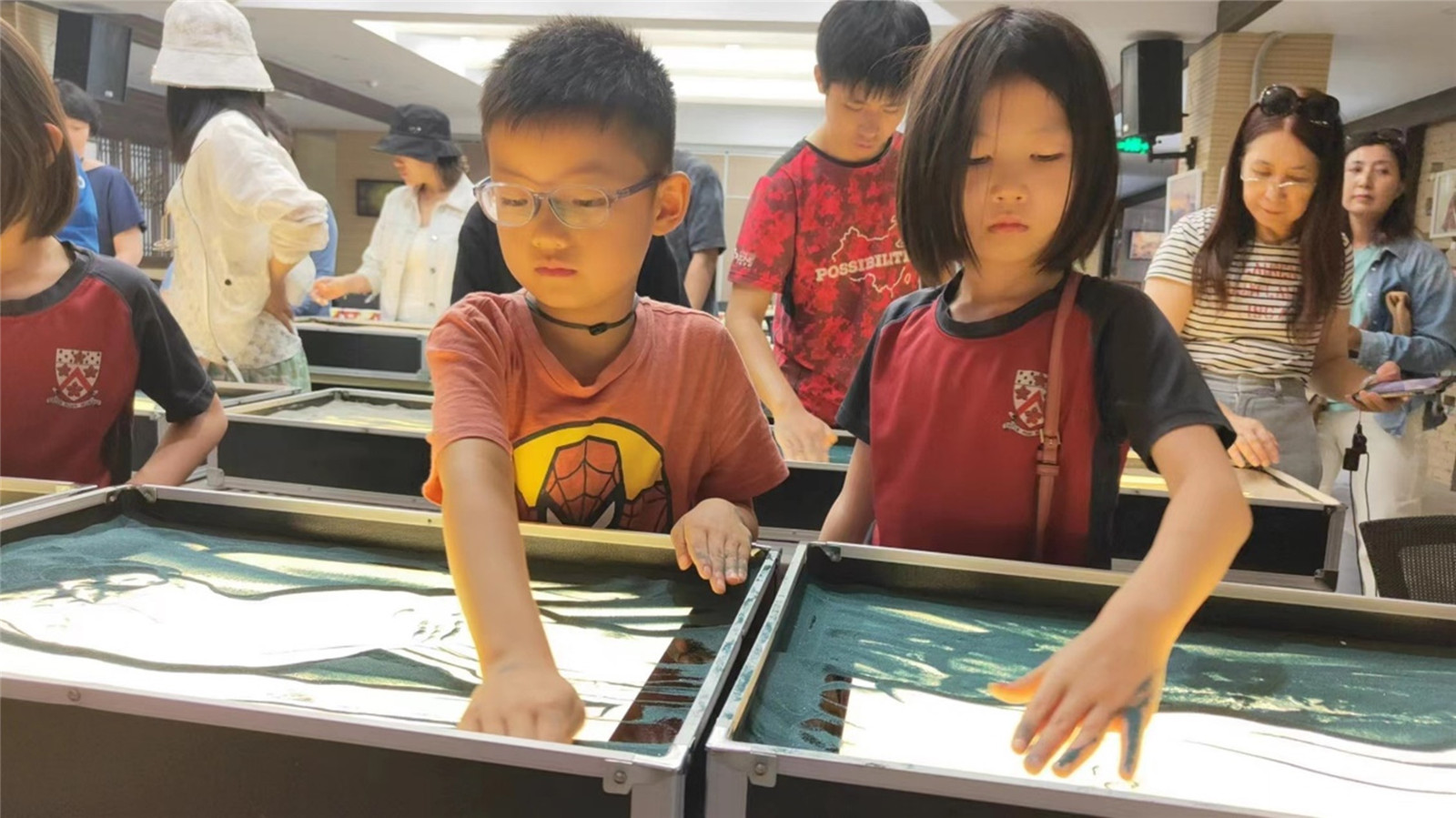
There was a moment during the trip that touched me the most: when we went to Cave 158. Featuring the Sleeping Buddha, Cave 158 was one of the caves that isn’t usually open to the public, and we were very fortunate to go inside and listen to the docent explain more about the cave to us.
At the exhibition at CEIBS in April 2023, I was responsible for explaining the mural depicting the princes from different countries morning for the Nirvana of the Buddha. I can still clearly remember that the mural showed us the different races and cultures present in the picture, the different clothes they were wearing and the different ways of mourning in their cultures. Some of their cultural ways of mourning are very cruel, like cutting their ears and piercing their hearts.
When we were at the Mogao Grottoes, our docent showed the security guard a sheet of paper so that we could enter, and then we climbed a narrow, winding stairway. The docent grabbed a different set of keys and opened two or three locks in front of the iron door. What appeared was the 17.2m wide cave walls filled with intricate murals, the floor covered with delicate patterns, and the huge statue of the Sleeping Buddha, with its closed eyes and benevolent smile facing us. The vast space was empty and full at the same time. There I saw the artwork I was the most familiar with hidden in the small corner of the northern wall of the cave. I realised how minor the details I know are compared to all the other murals in the cave, and how many more details were hidden at the back of the statue, where we cannot easily see. When the docent finished explaining, I followed the advice from the expert from the Dunhuang Academy she gave on the first night of our arrival: I asked if I could lock the door of the cave myself – which I could – and found the moment quite fulfilling.
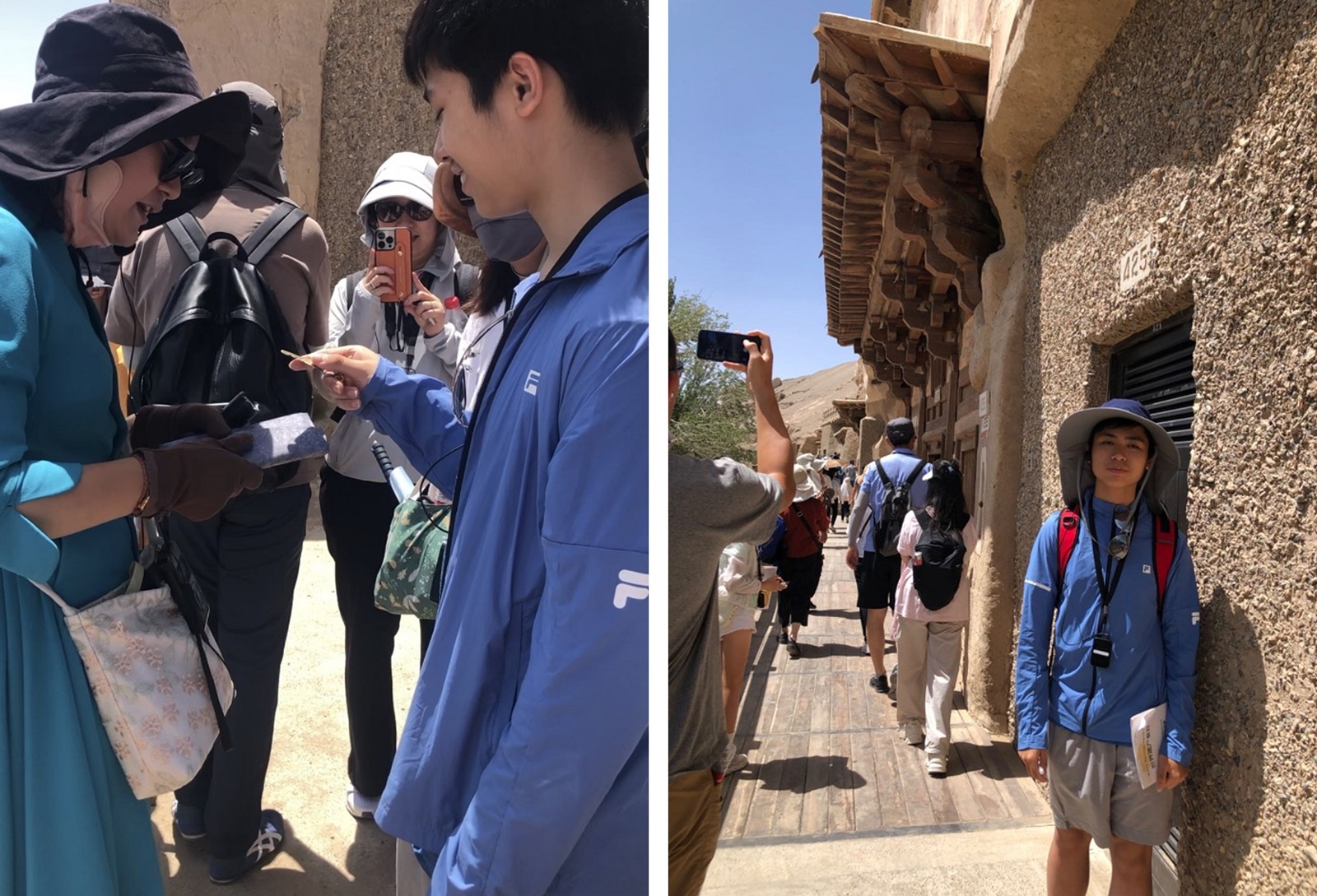
In conclusion, the trip exceeded my expectations and left me with a vivid impression of Dunhuang. I bet I won't forget my experience of locking the door of Cave 158. Though the trip was seven days long and packed with various activities, it has reinforced in me is undoubtedly worthwhile for me to visit Dunhuang again someday in the future.





